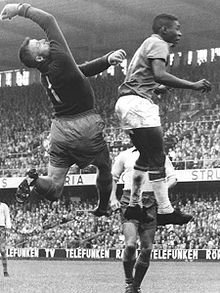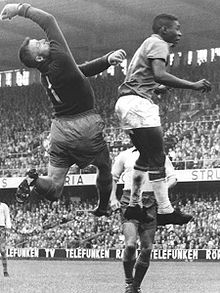
One of Mark Schubin's recent gems, made timely by what's happening in Brazil:
The year was 1958. The International Federation of Association Football (FIFA, based on its name in French) had scheduled its quadrennial World Cup for Sweden. Naturally, the national television broadcaster, Sveriges Radio Television (SVT), wanted to cover the matches live for the European Broadcasting Union’s Eurovision network. But there seemed to be a problem.Although Eurovision, itself, wasn’t created until 1954, the first test transmissions of television in Sweden didn’t occur until after Eurovision’s first network transmission. Actual broadcasting (from what was then called Radiotjänst Television) didn’t begin until 1956, daily broadcasts didn’t begin until 1957, and regular news broadcasts not until September 2 of 1958, months after the FIFA World Cup was over.
So Eurovision was appropriately concerned about the ability of SVT properly to cover the athletic contest, which would occur in different locations around the country. They needed a demonstration of SVT’s live remote capability. SVT provided one. They broadcast live on Eurovision Gluck’s opera Orfeo ed Euridice from the tiny Drottningholms Slottsteater outside of Stockholm. The 18th-century opera house had no broadcast facilities, no television lighting, no air conditioning, and could go up in flames if treated improperly.
The opera remote broadcast was a success, so Eurovision gave the okay for SVT to cover the FIFA World Cup for them. In the final game, a 17-year-old player called Pelé scored two goals, winning the match for Brazil and leading even his opponent, Swedish player Sigge Parling, to say, “When Pelé scored the fifth goal in that final, I have to be honest and say I felt like applauding.” Then, overcome with emotion, Pelé fainted. All of it was captured live on television, thanks to opera.
Pelé’s birthname was Edson Arantes do Nascimento, named after the American inventor Thomas Edison, whose work on the invention of motion pictures was intended specifically for opera and who predicted in 1891 that he would be able to show opera on color television at the 1893 Chicago World’s Fair. But that’s another story.
More Schubin specials: opera and baseball, and from the history of opera libretti.

